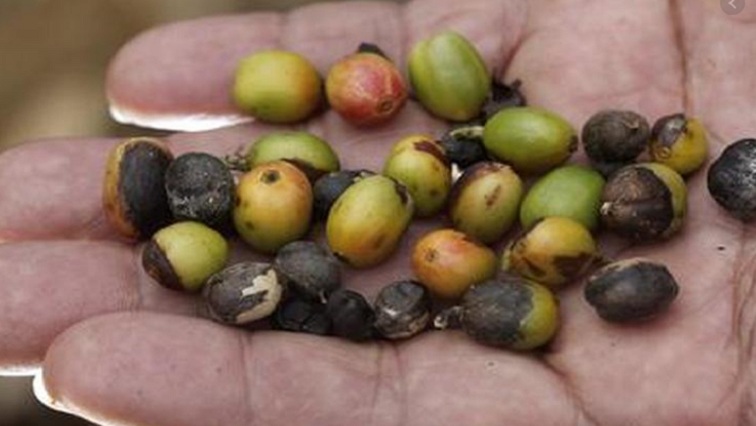Colombia’s coffee federation has discovered nine new, more aggressive variants of the fungus that causes coffee rust, it said on Thursday, urging producers to plant more resistant coffee varieties to avoid spreading the disease.
Colombia, the world’s top producer of washed arabica, has 855 000 hectares of coffee crops, while some 500 000 families depend on the industry.
Since 1983, when rust was first detected in the South American country, the National Center for Investigations of Coffee (Cenicafe) – the federation’s scientific arm – has identified 22 varieties of the rust.
“I call on coffee producers to build or renew their crops with resistant varieties, using certified seeds,” the federation’s director general, Roberto Velez, said in a statement.
Coffee rust is a disease caused by the fungus Hemileia vastatrix, which attacks the leaves of coffee plants and ruins crops.
In Colombia, the climate and altitude of coffee crops are favorable for coffee rust, Cenicafe director Alvaro Gaitan said.
Coffee rust, the most common disease affecting coffee plants in the world, is present in all producing countries and can cause losses of between 30% and 80% in susceptible plant varieties when outbreaks are not managed quickly.
Resistant plant varieties account for just over 84% of Colombia’s coffee crops, with susceptible varieties making up the remaining 16%.
Regular measurements show that while the average incidence of rust in susceptible varieties is 20% or more, it is 6% or less in resistant varieties.


